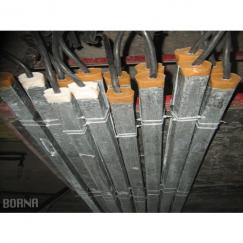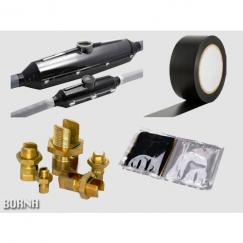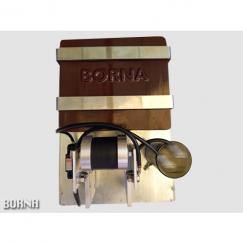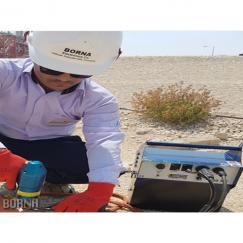Zinc Earthing Cells
In areas of pipelines used to insulate two parts of the pipe from the insulation kit at the flange, there may be a large potential difference between the two parts of the flange as a result of induction or the occurrence of lightning, resulting in degraded flange insulation. In this points, zinc anodes are used as ground electrodes to prevent such problems. The zinc earthing cell is both a damper for the upstream currents and an earth type, thereby reducing the protective current loss and on the other hand, due to the natural property of the metal, it acts as an anode and slightly improves the potential loss.
Schematic of zinc earthing cell connection to the pipeline and positioning in ground
The chemical composition of these electrodes is similar to zinc anodes and is produced according to ASTM B418 (Type II) standard. Zinc earthing cells can be single, double or quadruple (insulated from each other), and their assemblages are placed on the backfill (usually containing 75% gypsum, 20% bentonite, and 5% sodium sulfate) similar to zinc anodes.
For connecting, a copper cable with 10 mm2 or 16 mm2 cross section is used and the cable is welded to the steel core inside the electrode. The interface between the copper cable and the steel rod is coated with epoxy resin.
Dimensional characteristics and weight of zinc earthing cells
|
Weight (single/ double/ quadruple) (kg) |
Length (mm) |
Width (mm) |
Height (mm) |
|
11/22/44 |
914 |
40 |
40 |
|
10/20/40 |
1525 |
30 |
30 |
|
13/26/52 |
1525 |
36 |
36 |
|
17/34/68 |
1525 |
40 |
40 |
|
22/44/88 |
1525 |
45 |
45 |







